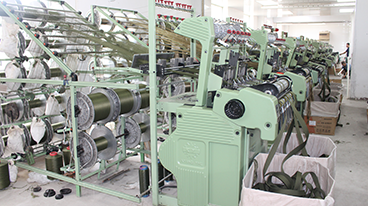The type of dyed textiles can be dyed at any stage, such as fiber, yarn, fabric and clothing.
1. Bulk fiber dyeing The dyeing of fibers or bulk fibers before spinning, which is carried out in large vats at appropriate temperatures. Color spinning mostly adopts the method of bulk fiber dyeing (also has the effect of single dyeing of different fibers), which is commonly used for woolen fabrics.
2. Top dyeing also belongs to fiber dyeing before fiber spinning. Like bulk fiber dyeing, it aims to obtain soft color mixing effect. Top dyeing is generally used for combed wool yarn and wool fabric.
3. Yarn dyeing Dye the yarn before weaving, generally used for dyed fabrics, sweaters, etc. or directly use yarn (sewing thread, etc.). Yarn dyeing is the basis of dyeing and weaving.

There are three methods of conventional yarn dyeing:
① Skein dyeing - dipping loose skein in a special dye vat is a high cost dyeing method;
② Package dyeing - package dyed yarn is wound on a perforated package, and then many packages are put into the dyeing vat. The dyeing solution circulates, and the fluffy effect and softness are not as good as those of skein dyeing.
③ Warp beam dyeing is a large-scale package dyeing. Before weaving, the warp beam (warping) should be made first, and the yarn of the whole warp beam should be dyed, such as combined sizing and dyeing machine and bundle dyeing of warp beam yarn. As it is a warp beam, it is mostly suitable for woven dyeing. However, with the appearance of bobbin dropping, we can turn the dyed yarn on the bobbin into bobbin yarn, and this kind of dyed yarn can be used more widely. For example, the reduction dyeing method mostly used in indigo dyeing can only be solved by using bobbin dyeing. If there is no bobbin dropping, it is difficult to achieve.
4. Match dyeing The method of dyeing the fabric is match dyeing. The common methods are rope dyeing, jet dyeing, roll dyeing, pad dyeing (not tie dyeing) and warp beam dyeing. We will not introduce them here.
5. For ready to wear dyeing, the ready to wear clothes are put into nylon bags, and a series of bags are put into the dye vat together, where they are continuously stirred (paddle dyeing machine). Garment dyeing is mostly suitable for knitted socks, T-shirts and other knitted clothes, sweaters, pants, shirts and other simple ready-made clothes. Since the 1990s, high and new technologies have advanced by leaps and bounds. A large number of new materials and new processes have emerged one after another. Moreover, printing and dyeing technology meets the requirements of the ecological textile standard 100, caters to the current world textile consumption trend, and has a very optimistic application prospect. Due to the successful application of new high molecular materials abroad and the reduction of their commercial costs, the new adhesive, together with relevant pastes and additives, can be printed and dyed in a large area even on silk fabrics in an appropriate way, and the handle and color brightness of the finished product are similar to those of dye printing or dyeing, achieving a soft effect and expanding the scope of application.

